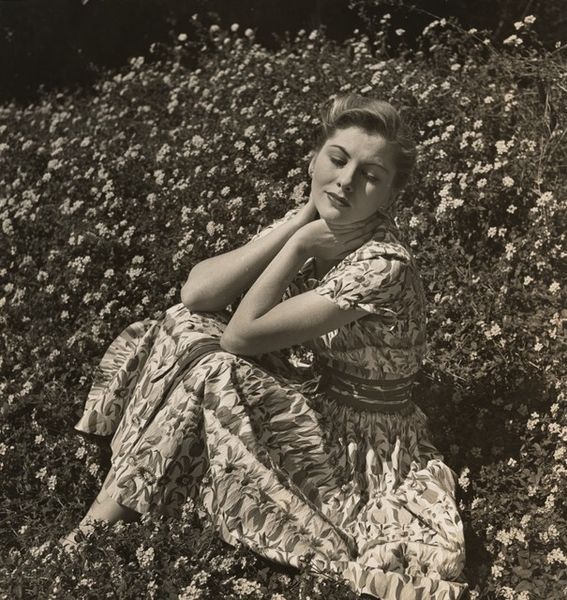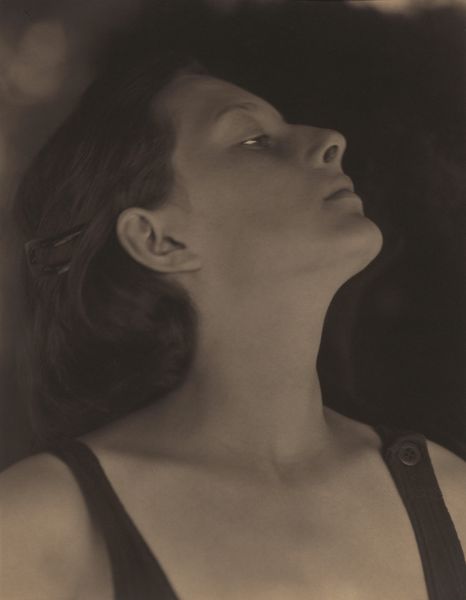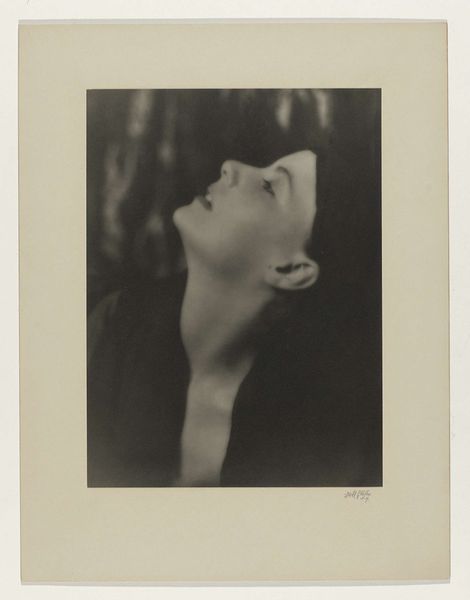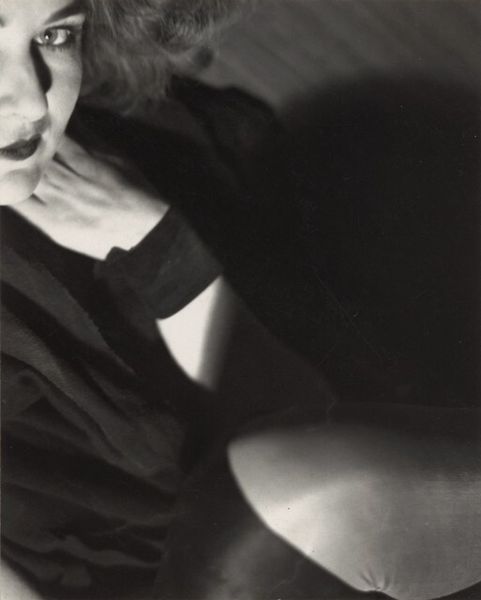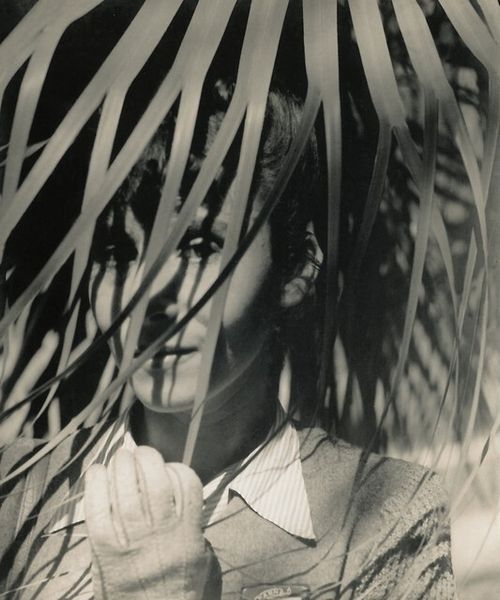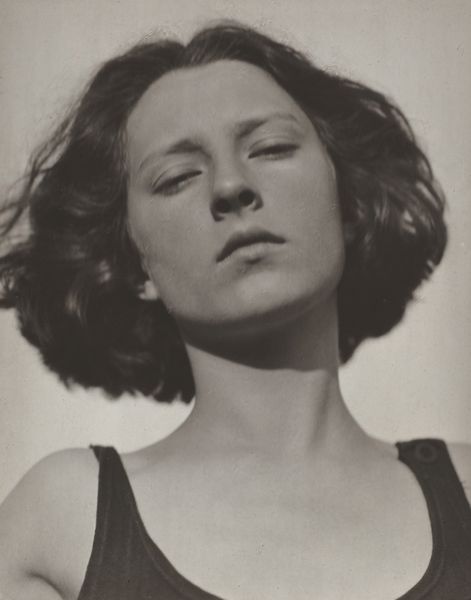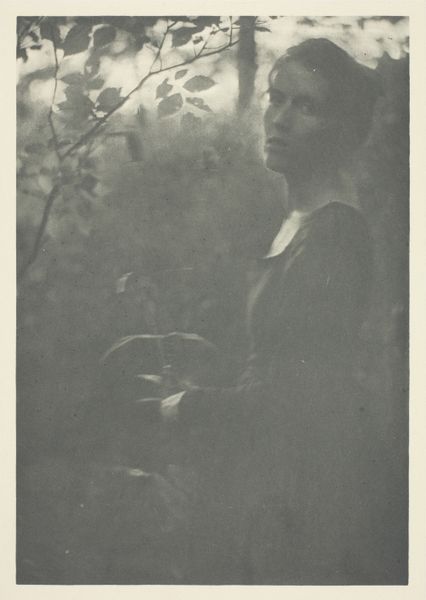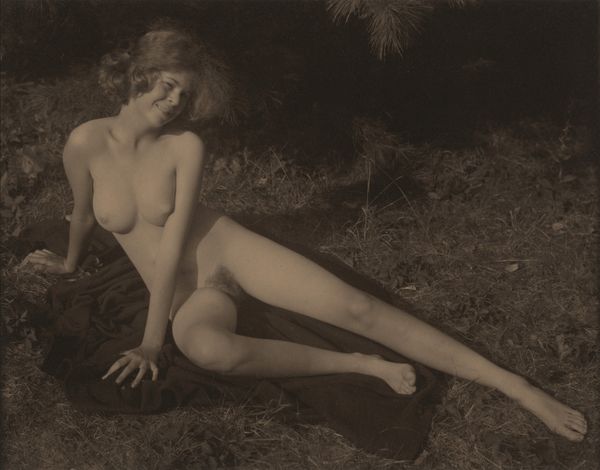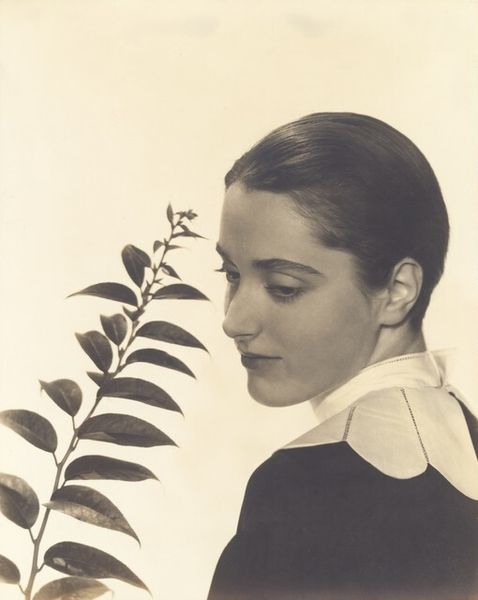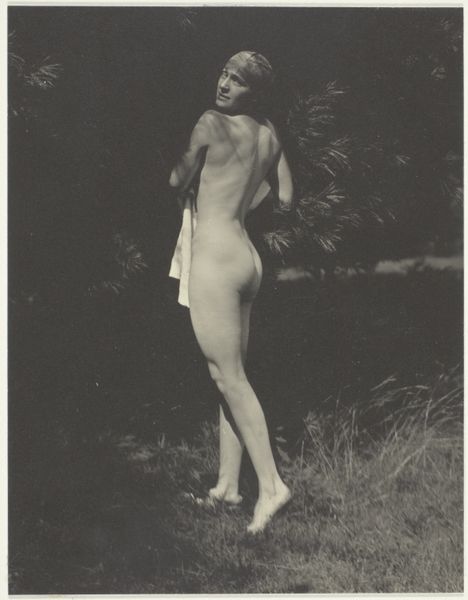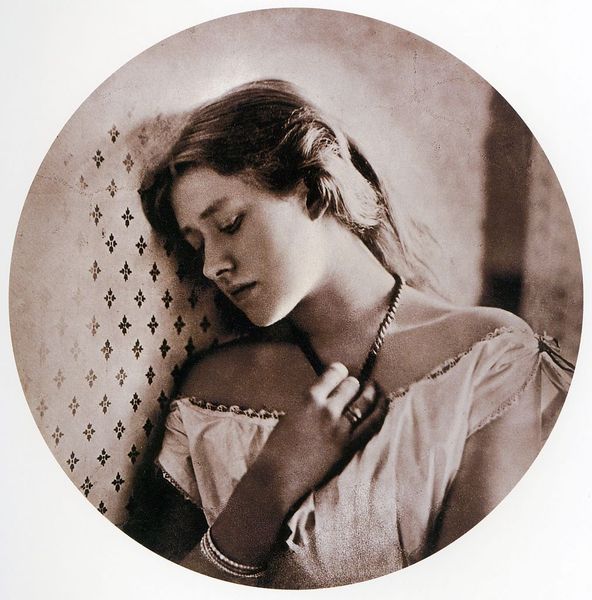
photography
#
portrait
#
still-life-photography
#
photography
#
black and white
#
surrealism
#
surrealism
Dimensions: overall: 28.2 × 22.3 cm (11 1/8 × 8 3/4 in.)
Copyright: National Gallery of Art: CC0 1.0
Curator: Ilse Bing took this photographic "Study for 'Salut de Schiaparelli' (Lily Perfume), Paris" in 1934. What captures your attention first about this composition? Editor: The texture! The sharp, almost harsh light contrasting against the soft skin and velvety petals is incredibly tactile. It makes me wonder about the staging of this shot; the physical work behind achieving such a precise and captivating image using what at the time must have been somewhat crude tools. Curator: That texture enhances the symbolic language, doesn't it? Lilies have age-old associations with purity, rebirth, and even death. Juxtaposed with a living, breathing model, they become powerful symbols of ephemeral beauty. Consider the relationship with Schiaparelli. Perfume as ephemeral luxury—mortality rendered glamorous. Editor: Absolutely. And the choice of black and white heightens the contrast—emphasizing both light and shadow, presence and absence. But I also think it's a commentary on artifice. We see the “study” as it were, but even this “raw” shot has so much constructed labor behind it, creating layers of consumption between image, perfume, the model, and viewer. What processes might she have used? Curator: One assumes the darkroom played a major role, but Bing, with her background in mathematics and architecture, was meticulous about composition, and it shows here. The arrangement of the lilies directs the eye to the model’s face, making it both an object and the focal point of an awakening—a potent moment, charged with possible transformation. It’s about far more than simply selling perfume. Editor: It certainly is. It forces you to consider the work put in. Bing wasn’t simply capturing something—she built something. Even the “raw” photograph reflects this intense labor; it reflects capital—both economic and symbolic. Curator: Indeed. Considering how symbols reflect both the collective and personal, there’s a continuous feedback loop here. What’s most striking is the visual and thematic connection to cultural archetypes—timeless patterns repeating, updated, through different media, throughout time. Editor: Absolutely, thinking of Bing as not just taking the photograph but making the photograph… reveals her labor as a layer of the final work for me, as if we could smell it along with the lilies. Curator: Precisely. A scent of creative intent. Editor: A powerful statement! Thank you for guiding us today.
Comments
No comments
Be the first to comment and join the conversation on the ultimate creative platform.

